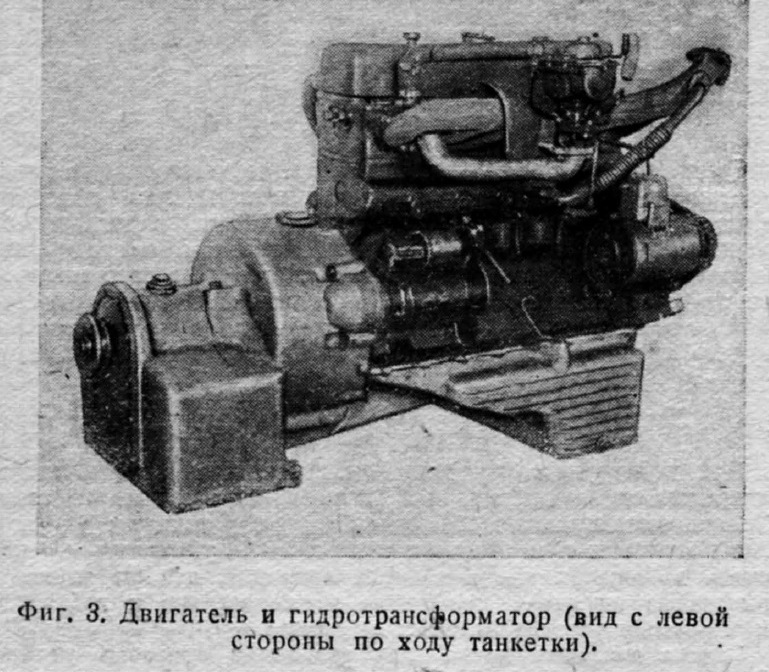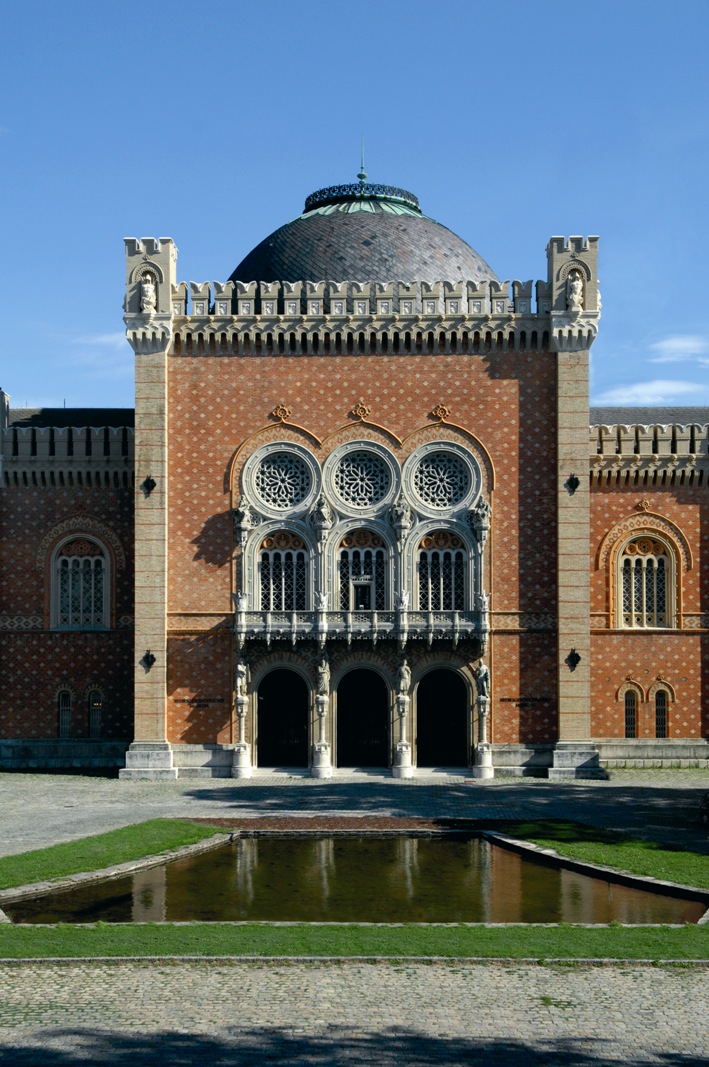|
Borgward B IV
The Borgward IV, officially designated ''Schwerer Ladungsträger Borgward B IV'' (heavy explosive carrier Borgward B IV), was a German remote-controlled demolition vehicle used in World War II. Design During World War II, the ''Wehrmacht'' used three remotely operated demolition tanks: the light Goliath (''Sd.Kfz. 302/303a/303b''), the medium Springer (''Sd.Kfz. 304'') and the heavy Borgward IV (''Sd.Kfz. 301''). The Borgward IV was the largest of the vehicles and the only one capable of releasing its explosives before detonating; the two smaller vehicles were destroyed when their explosive charges detonated. Borgward originally developed the B IV as an ammunition carrier, but it was found unsuitable. It was also tested as a remote minesweeper, but was too vulnerable to mines and too expensive. During the Battle of France, German engineers from the 1st Panzer Division converted 10 Panzer I Ausf Bs into demolition and mine clearing vehicles, using them to place timed charges ... [...More Info...] [...Related Items...] OR: [Wikipedia] [Google] [Baidu] |
Panzerjäger Wanze
''Panzerjäger'' (German: literally "armor hunter", more broadly "anti-tank") is a term used for an anti-tank vehicle (self-propelled anti-tank gun), as well as anti-tank units. The term was first used in the Wehrmacht (German armed forces, 1935–45), and also post-war by the German Federal Republic Bundeswehr. The term ''Panzerjäger'' was used in the Bundeswehr as a designation of rank. Wehrmacht Development From 1940, the troops were equipped with vehicles produced by mounting an existing anti-tank gun complete with the gun shield on a tracked chassis to allow higher mobility. The development of ''Panzerjägers'' into the fully protected armored vehicle designs began before the war with the -designated armored artillery vehicles, the initial German turretless tanks to use completely closed-in armored casemates, and continued until 1944, resulting in the fully enclosed "hunting tanks", purpose-built heavy-gun tank destroyers. These usually used upward extensions of ... [...More Info...] [...Related Items...] OR: [Wikipedia] [Google] [Baidu] |
Warsaw 44
''Warsaw 44'' () is a 2014 Polish war film written and directed by Jan Komasa. The film depicts the Warsaw Uprising in 1944 during the German occupation of Poland. Plot In the summer of 1944, the Red Army advances from the east in the direction of Warsaw. For that reason, the Polish underground Home Army launches a revolt against the German occupying force. Underground fighter Stefan joins the armed uprising. He loves nurse Ala, but also has feelings for an underground fighter named Kama. A story of love and friendship unveils during the bloody and brutal reality of the 1944 Warsaw Uprising as the uprising is crushed, with heavy casualties and most of the city destroyed. Stefan is an activist who assists the AK, but is not quite a member. At work, he attempts to hide his gun from a SS officer, Johan Krauss, who slaps his face with a whip. Together with his friends, he goes out to the countryside where he meets Ala, who has swum out to an island in a lake that she refuses to ... [...More Info...] [...Related Items...] OR: [Wikipedia] [Google] [Baidu] |
Vienna Offensive
The Vienna offensive was an offensive launched by the Soviet 2nd and 3rd Ukrainian Fronts in order to capture Vienna, Austria, during World War II. The offensive lasted from 16 March to 15 April 1945. After several days of street-to-street fighting, the Soviet troops captured the city on 13 April 1945. Background Vienna had been bombarded continuously for the year before the arrival of Soviet troops, and many buildings and facilities had been damaged or destroyed. Joseph Stalin reached an agreement with the Western Allies prior to April 1945 concerning the relative postwar political influence of each party in much of Eastern and Central Europe; however, these agreements said virtually nothing about the fate of Austria, then officially considered to be merely the Ostmark area of Greater Germany after the Anschluss. As a result, the success of a Soviet offensive against Austria and subsequent occupation by the Red Army of a large part of the country would have been very benefi ... [...More Info...] [...Related Items...] OR: [Wikipedia] [Google] [Baidu] |
Wien Südbahnhof
Wien Südbahnhof ( German for ''Vienna South Station'') was Vienna's largest railway terminus. It closed in December 2009 and was demolished in 2010 to be replaced with a new station, Wien Hauptbahnhof. It was located in Favoriten, in the south-east of the city. The East-bound rail services of Südbahnhof remained in operation until 2012 at a temporary train station "Südbahnhof (Ostbahn)". History Predecessors The earliest antecedents of the modern Südbahnhof were the ''Gloggnitzer Bahnhof'', the start of the South railway, and the ''Raaber Bahnhof'', the start of the East railway, which were built by Matthias Schönerer in a classical style (1841–1846). The two stations were placed symmetrically, and both made use of the same depots and workyards. Divided eastward and southward section In the course of industrialisation, the need for rail transportation grew, and the Austrian railways passed from private hands into government control. The old ''Raaber Bahnhof'' was re ... [...More Info...] [...Related Items...] OR: [Wikipedia] [Google] [Baidu] |
Overlord Museum
The Overlord Museum is a museum which focuses on the Allied landings in Normandy with Operation Overlord and the subsequent development of the Second World War. It is located in Colleville-sur-Mer in the Calvados department of the Normandy region in northern France. The museum is located near the Omaha Beach Landing Section and the American War Cemetery, known worldwide as the World War II Normandy American Cemetery and Memorial The Normandy American Cemetery and Memorial () is a World War II cemetery and memorial in Colleville-sur-Mer, Normandy, France, that honors American troops who died in Europe during World War II. It is located on the site of the former temporary .... Museum concept and contents of the exhibition The museum exhibits objects inside and outside the museum. The arrangement in the interior is in the style of large dioramas, which allow objects to be shown in contemporary real environments. Vehicles, objects, and life-size dolls were assembled into scenes ... [...More Info...] [...Related Items...] OR: [Wikipedia] [Google] [Baidu] |
Greater Boston
Greater Boston is the metropolitan region of New England encompassing the municipality of Boston, the capital of the U.S. state of Massachusetts and the most populous city in New England, and its surrounding areas, home to 4,941,632. The most stringent definition of the region, used by the Metropolitan Area Planning Council, consists of most of the eastern third of mainland Massachusetts, excluding the Merrimack Valley and most of Southeastern Massachusetts, though most definitions (including the U.S. Census Bureau, U.S. Census definition) include much of these areas and portions of southern New Hampshire. While the city of Boston covers and has 675,647 residents as of the 2020 census, the urbanization has extended well into surrounding areas and the Combined Statistical Area (CSA in the rest of the document), which includes the Providence, Rhode Island, Manchester, New Hampshire, Cape Cod and Worcester, Massachusetts, Worcester areas, has a population of more than 8.4 million ... [...More Info...] [...Related Items...] OR: [Wikipedia] [Google] [Baidu] |
American Heritage Museum
The American Heritage Museum is a military history museum located on the grounds of the Collings Foundation in the town of Stow, Massachusetts, west of Boston. The collection consists of over 100 artifacts, most of which were formerly part of the Military Vehicle Technology Foundation collection in Portola Valley, California. Over half of the items on display are from the World War II era, with World War I, the Korean War, Vietnam War, Gulf War, Iraq War, and the War on Terror also represented. Most of the items on display, including tanks and artifacts, are American, German, Russian, or British in origin. History Beginning in the early 1980s and continuing for the next 20 years, Jacques Littlefield, a Stanford University graduate and former Hewlett Packard engineer, amassed a $30 million collection of military vehicles and engaged in a program of restoring many of them and giving educational tours to the public. By the time of Littlefield's premature death in 2009, his collect ... [...More Info...] [...Related Items...] OR: [Wikipedia] [Google] [Baidu] |
Kubinka Tank Museum
The Kubinka Tank Museum (Центральный музей бронетанкового вооружения и техники - Tsentral'nyy Muzey Bronetankovogo Vooruzheniya I Tekhniki -Central Museum of Armored Arms and Technology) is a large military museum in Kubinka, Odintsovsky District, Moscow Oblast, Russia where tanks, armoured fighting vehicles (AFVs) and their relevant information are displayed and showcased. The museum consists of open-air and indoor permanent exhibitions of many famous tanks and armored vehicles from throughout the 20th and 21st centuries (between 1917 and the present day). It also houses and displays many unique, unusual and one-of-a-kind military vehicles of which there are very few remaining examples, such as the German Panzer VIII Maus super-heavy tank, Object 279, Troyanov's Object 279 Kotin heavy tank, the Karl-Gerät heavy self-propelled artillery, and the SU-152 "Taran", Object 120 Su-152 "Taran" tank destroyer, amongst other single or limit ... [...More Info...] [...Related Items...] OR: [Wikipedia] [Google] [Baidu] |
Wiener Zeitung
''Wiener Zeitung'' () is an Austrian newspaper. First published as the ''Wiennerisches Diarium'' in 1703, it is one of the oldest newspapers in the world. Until April 2023, it was the official gazette of the government of the Republic of Austria for legally-required announcements, such as company registrations§ 10 (1) UGB, dRGBl. S 219/1897 as amended by BGBl. I Nr. 63/2019 and was also the official publishing body for laws and executive orders until 2004.Bundesgesetz über das Bundesgesetzblatt 2004, BGBl. I Nr. 100/2003 Considered a newspaper of record, ''Wiener Zeitung'' was among the four Austrian daily quality newspapers beside the right-liberal '' Die Presse'', the left-liberal ''Der Standard'' and the Christian-liberal and conservative '' Salzburger Nachrichten''. The newspaper ended its daily print edition on 30 June 2023, becoming an online publication. The launch of the digital platform won the 2023 European Publishing Award for a “Launch or Relaunch” of a publica ... [...More Info...] [...Related Items...] OR: [Wikipedia] [Google] [Baidu] |
Vienna
Vienna ( ; ; ) is the capital city, capital, List of largest cities in Austria, most populous city, and one of Federal states of Austria, nine federal states of Austria. It is Austria's primate city, with just over two million inhabitants. Its larger metropolitan area has a population of nearly 2.9 million, representing nearly one-third of the country's population. Vienna is the Culture of Austria, cultural, Economy of Austria, economic, and Politics of Austria, political center of the country, the List of cities in the European Union by population within city limits, fifth-largest city by population in the European Union, and the most-populous of the List of cities and towns on the river Danube, cities on the river Danube. The city lies on the eastern edge of the Vienna Woods (''Wienerwald''), the northeasternmost foothills of the Alps, that separate Vienna from the more western parts of Austria, at the transition to the Pannonian Basin. It sits on the Danube, and is ... [...More Info...] [...Related Items...] OR: [Wikipedia] [Google] [Baidu] |
Heeresgeschichtliches Museum
The Museum of Military History – Military History Institute () in Vienna is the leading museum of the Austrian Armed Forces. It documents the history of Austrian military affairs through a wide range of exhibits comprising, above all, weapons, armours, tanks, aeroplanes, uniforms, flags, paintings, medals and badges of honour, photographs, battleship models, and documents. Although the museum is owned by the Federal Government, it is not affiliated with the Federal museums but is organised as a subordinate agency reporting directly to the Ministry of Defence and Sports.''Weißbuch 2012''. Amtliche Publikation der Republik Österreich/Bundesminister für Landesverteidigung und Sport, Wien 2013, S. 58 f. The museum building and its history The museum building (Arsenal object number 18) is the centrepiece of Vienna's Arsenal, a huge military complex previously consisting of a total of 72 buildings erected in the wake of the 1848/49 revolution. The Arsenal was the ... [...More Info...] [...Related Items...] OR: [Wikipedia] [Google] [Baidu] |




